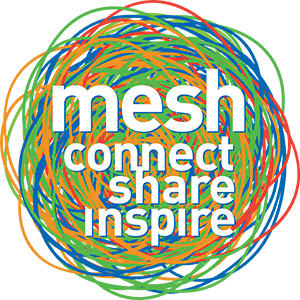 Sam Fiorella and Danny Brown, who co-wrote Influence Marketing will be doing a session at meshmarketing about influencer marketing, a topic that many brands are seriously exploring to drive their digital marketing efforts.
Sam Fiorella and Danny Brown, who co-wrote Influence Marketing will be doing a session at meshmarketing about influencer marketing, a topic that many brands are seriously exploring to drive their digital marketing efforts.
Here’s a mini-Q&A with Sam about his thoughts on the social media landscape:
When it comes to social media, what strikes you as the most interesting or exciting trends or developments?
Funny enough, it’s the anti-social movement. I’ve noticed more people are taking “digital vacations” and culling their friend lists because social media has created a conflicting world. We’re connected to more people, yet don’t have more meaningful relationships. We’re encouraged (and rewarded) to connect with more and more people, yet we don’t have the time to manage the expectations that come along with that. There’s so much noise created in our digital world today that we have to work too hard to find real value in the cacophony of content that is being created. Similarly, businesses are struggling with Big Data – they’re collecting more and more consumer data, brand “Likes,” and earned media but they can’t clearly connect that engagement to customer life time value.
The pendulum is swinging back and it seems that individuals and businesses alike are seeking more meaning from smaller niche communities or by compartmentalizing their audience. This will have a big effect on technology from a GUI perspective as well as a programming and analytics one.
What’s your take on how social media, content marketing and inbound marketing are converging or intersecting?
They’ve always been one, yet we’re just starting to understand how they work together. Social media is not a different from of marketing, it’s just another channel. Content marketing is not another form of marketing, it’s just another technique. In fact, I could argue there’s no such thing as “content marketing;” before social media (social networks, blogs, etc.), content marketing was just marketing. I’ve heard this claim from early adopters for a while but it seems the mainstream is now becoming aware. My clients are more comfortable with marketing solutions when these tactics are presented as just that: tactics within an integrated marketing plan.
Brands are fascinated with influencers. How do they get started in the right way? (A loaded, softball question!)
This requires an entire book to spell out properly. Oh, wait, there is such a book! If I had to provide an elevator pitch, I would say brand managers must better interface with sales and customer service teams (and software) to identify how customer make purchase decision, what factors affect how they make decisions, and who are they speaking with at the point a decision is made. In short, start with the customer and link their decision making to your business’s product or service. Understand the purchase life cycle of your customers and orient your influence marketing strategies around that. A recommendation or product offer is received and interpreted differently by a prospect who has never heard about your business than it is by someone who is already considering a purchase. Similarly, someone who is in the market for a specific product will react differently to a recommendation than someone who has no need.
I’d warn brands away from quick-start/short-cut solutions like using social influence scoring platforms to identify who is deemed influential. Instead, I’d recommend focusing on the factors that affect how their customers make purchase decisions and build communication paths between those customers, at each stage of the life cycle, to those who can sway those decisions in your favour.
What are the new and favourite digital services in your toolbox?
I have a long list of new products that I want to try out but currently I’m playing with new influence marketing platforms like Little Bird, Traackr, Appinions, and InNetwork that are applying new methodologies to the industry. Little Bird does not factor social conversations into their determination of who is – and isn’t – influential on specific topics. Appinions uses natural language processing against a database of online and offline content to understand who creates the opinions that drive action in specific industries. InNetwork is a fantastic tool that uses both software and “elbow grease” of its analysts to understand the makeup of a blogger’s audience. Each is pushing the industry forward and I’m fascinated by each.
